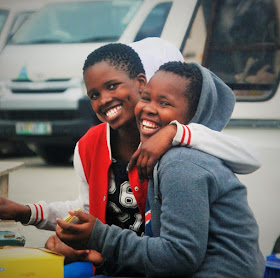Knowing that we were going to be here in Langkawi Malaysia, company from back home decided to visit. So we moved
Sea Turtle from the protected anchorage to the marina dock in the inner harbour of Telaga (N06°22.049' E099°41.116'). We had reserved a spot as we also need to be at the dock while Jordan installs the new Beta 43 motor.
We have not been at a dock since, I think, probably 2014, other than when doing extensive boat work this year at Boat Lagoon in Thailand. We always prefer to anchor whenever possible.
We met Jordan's mom (who everyone calls Gramma Judy) and his brother Tory at the Langkawi Airport on September 8th. Tory could only stay for 1 week of sailing around Langkawi before returning to Canada. Then Gramma Judy, Jordan, and I were to fly to South Africa for a safari adventure and sightseeing!
So while they were here, everyone wanted to get out and go sailing. A new experience for Gramma at 90 years old. So we left the dock bright and early. Now
Sea Turtle had a new Captain at the helm. Interim Captain Gramma Judy. She did a great job keeping us on course enjoying it so much she wouldn't allow us to use the auto-pilot!
Captain Gramma Judy
We spent our first night anchored at the uninhabited island called Pulau Singa Besar (N06°13.599' E099°44.804') adjacent to the southwestern tip of Langkawi Island. Everyone slept under fans for relief of the heat.
The next day, we sailed a short distance for 45 minutes to Pulau Dayang Bunting (N06°12.135' E099°46.714') where we hiked up many stairs for a refreshing dip in the lake there.
Anchored by Dayang Bunting
Then we re-anchored for the night, a short distance away in a narrow cut, between the islands of Gubang Durat and Dayang Bunting (N06°11.062' E099°47.157')
September 11th, we headed out for some exploring in the dinghy to some adjacent islets. There we found some cool caves where we could take the dinghy a ways inside. Swimming and beachcombing (N06°10.687' E099°46.809') in the serenity of these picturesque islands were like a dream to our guests.
A beach all to ourselves: Gubang Laut (Tory, Gramma Judy, Jordan)
After a couple of hours, we moved to Pulau Tepor just across from Cenang Beach where we dropped the anchor for the night (N06°16.207' E099°43.393'). Another hot one...
Where's the Captain! (courtesy of Tory)
The next day we unfortunately had to cut short the sailing and return to Telaga Harbour dock. Jordan had discovered that in preparation for our upcoming South Africa trip, he only had 1 partial blank page left in his passport and we were led to believe that 2 to 3 blank pages were required for entry into South Africa. We researched it thoroughly with internet at the dock and found 1 site that said only 1 blank page was needed.
After much pondering, it was finally decided to take a chance and fly. If necessary, Jordan would have to have pages added to his passport in Hong Kong and meet Gramma Judy and me in South Africa when he could.
So with a couple of days to kill, we rented a car to tour the big island of Langkawi.
At the north end, we boarded a speed boat for a mangrove swamp experience. We would our way for miles in the natural channels then to drastically different scenery. Here nature has sculptured some spectacular rock formations allowing us to motor through a narrow cut and through a cave, then to what they call the
Hole in the Wall. It's a well protected anchorage where just outside past some limestone cliff sentinels is the open ocean. There we stopped for lunch at the floating restaurants. The return was out in the open ocean past vertical cliffs, caves, and beaches.
Floating restaurant (courtesy of Tory)
The last day or so in the sweltering heat (thank goodness for cool showers and fans) was spent packing for our Africa trip and putting
Sea Turtle to sleep at the dock for a few weeks.




















































